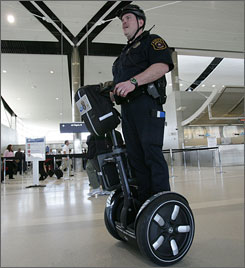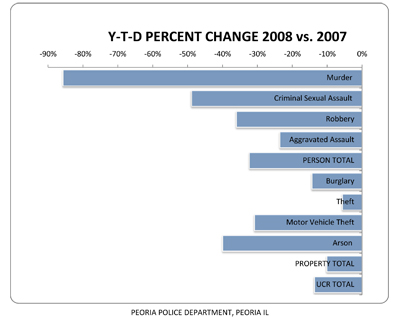The City of Peoria held a press conference yesterday at Peoria Police headquarters to announce that tickets given to high school students at Manual and Woodruff for walking in the middle of the roadway and/or jaywalking will be abated if the students attend mandatory school assemblies where police officers and school officials will try to give students a “better understanding of the rules.”
Police Chief Steve Settingsgaard stood by his officers, again reiterating that they acted appropriately, even though that’s disputed by local African American leaders. However, he felt the need to “move beyond that disagreement” and recognize that the city, school board, and African American leaders such as local NAACP president Don Jackson all “wanted to get to the same place,” i.e., a safer environment for the children and the motoring public. “We can get there through this assembly process,” he said.
The assembly process should be completed before Thanksgiving.
Don Jackson stated on behalf of the NAACP, “we enthusiastically support this resolution.” Rev. Harvey Burnette, who had previously asked that the tickets be reduced to warnings, was pleased with the outcome. Dr. Rita Ali of the King Holiday Committee also spoke in favor of the resolution.
The agreement was reached during a meeting that included representatives of the city, police, school district, NAACP, King Holiday Committee, and pastors. These groups will continue to meet to improve “community/police relations.”
 My two cents: Message received. Tickets can be adjudicated in the court of public opinion. Fines can be wiped away if enough public pressure and, most importantly, the race card are applied. No need to go through established processes.
My two cents: Message received. Tickets can be adjudicated in the court of public opinion. Fines can be wiped away if enough public pressure and, most importantly, the race card are applied. No need to go through established processes.
I realize racism exists and is a problem in this community. One need look no further than the Journal Star website’s comments section to see it on display every day. But these tickets had nothing to do with racism. They had everything to do with children walking in the middle of the street, obstructing motorists, and intimidating drivers.
Yes, in one case, there was an eyewitness who said the children she saw were not walking in the middle of the street. But wouldn’t it have been better to have that come out in court? To have the police and the eyewitness testify and let a judge make a determination? Then it’s on the record, and steps can be taken to rectify that situation through established processes. Isn’t that the reason those systems were established in the first place?
Instead, these children plus all the other students who were ticketed — meaning all those whose culpability was never disputed — get off scot-free. What message does that send?
It sends the message that playing the victim and accusing police of racism works. It sends the message that African Americans evidently can’t get a fair hearing in a court of law, so their hearing needs to be held in the court of public opinion instead. It sends the message that African Americans and the police are enemies who need some sort of arbitrator in the form of a “community/police relations” committee.
It sends the wrong message. It doesn’t teach the students personal responsibility for their actions. And it does nothing to battle real racism.
One post-script: the police chief did say that “there will be enforcement in the future.” Hopefully that future enforcement will be supported by all community leaders so we can get back to dealing with the real problem in this particular case: children walking in the middle of streets.


 Monday night, the Peoria Police Benevolent Association
Monday night, the Peoria Police Benevolent Association  On the city council agenda for next Tuesday is a request by the Police Department to purchase two Segway Personal Transport vehicles to be used by parking enforcement officers and police patrolling congested public events. Here’s the justification as it appears in the
On the city council agenda for next Tuesday is a request by the Police Department to purchase two Segway Personal Transport vehicles to be used by parking enforcement officers and police patrolling congested public events. Here’s the justification as it appears in the 
 My two cents: Message received. Tickets can be adjudicated in the court of public opinion. Fines can be wiped away if enough public pressure and, most importantly, the race card are applied. No need to go through established processes.
My two cents: Message received. Tickets can be adjudicated in the court of public opinion. Fines can be wiped away if enough public pressure and, most importantly, the race card are applied. No need to go through established processes.